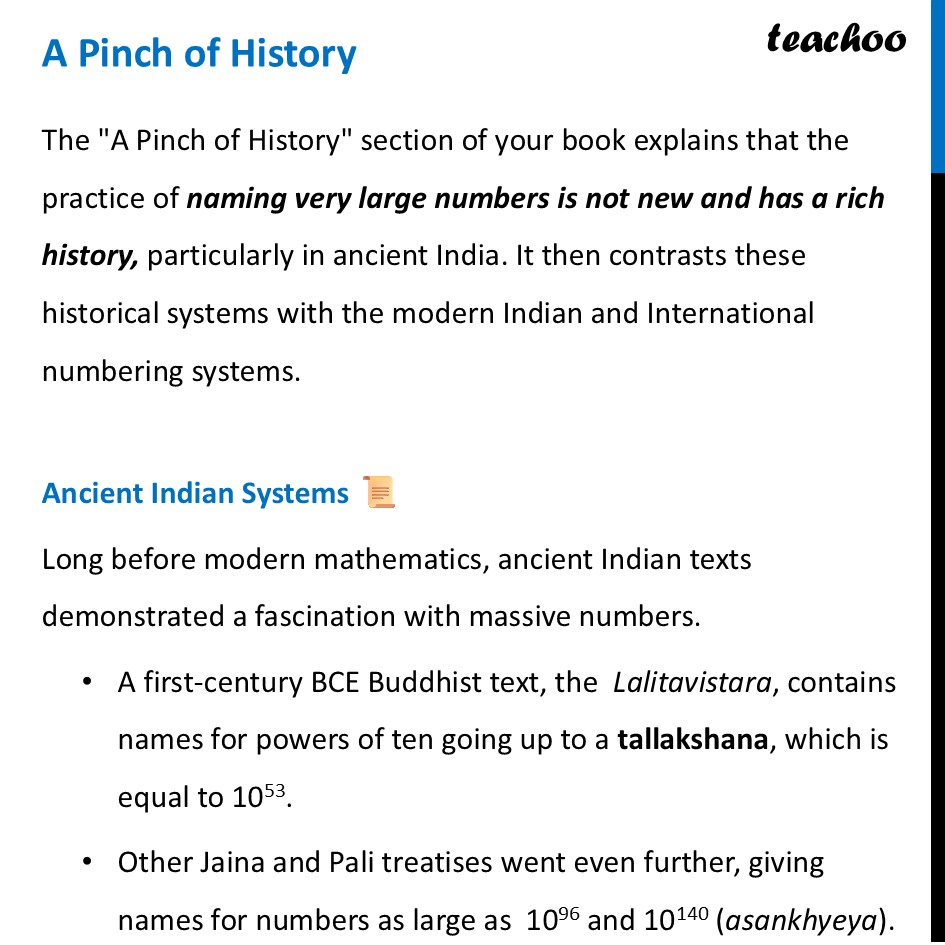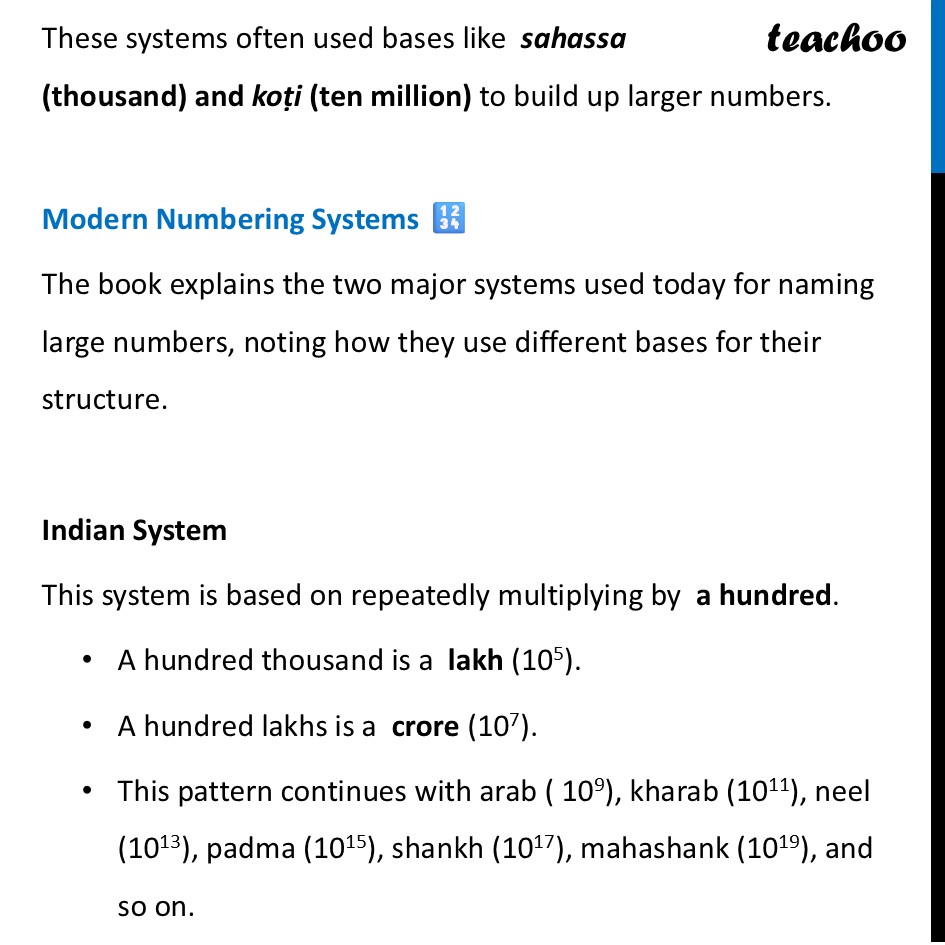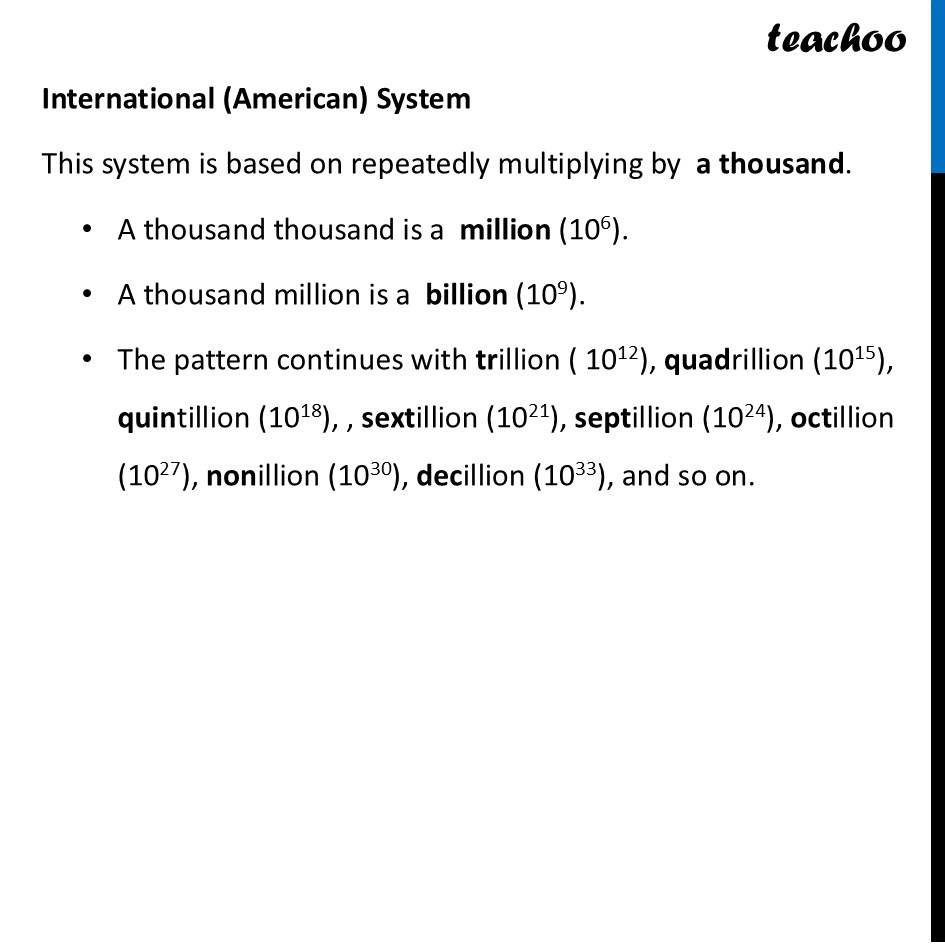


A Pinch of History
Last updated at August 18, 2025 by Teachoo



Transcript
A Pinch of History The "A Pinch of History" section of your book explains that the practice of naming very large numbers is not new and has a rich history, particularly in ancient India. It then contrasts these historical systems with the modern Indian and International numbering systems. Ancient Indian Systems 📜 Long before modern mathematics, ancient Indian texts demonstrated a fascination with massive numbers. A first-century BCE Buddhist text, the Lalitavistara, contains names for powers of ten going up to a tallakshana, which is equal to 1053. Other Jaina and Pali treatises went even further, giving names for numbers as large as 1096 and 10140 (asankhyeya). These systems often used bases like sahassa (thousand) and koṭi (ten million) to build up larger numbers. Modern Numbering Systems 🔢 The book explains the two major systems used today for naming large numbers, noting how they use different bases for their structure. Indian System This system is based on repeatedly multiplying by a hundred. A hundred thousand is a lakh (105). A hundred lakhs is a crore (107). This pattern continues with arab ( 109), kharab (1011), neel (1013), padma (1015), shankh (1017), mahashank (1019), and so on. International (American) System This system is based on repeatedly multiplying by a thousand. A thousand thousand is a million (106). A thousand million is a billion (109). The pattern continues with trillion ( 1012), quadrillion (1015), quintillion (1018), , sextillion (1021), septillion (1024), octillion (1027), nonillion (1030), decillion (1033), and so on.